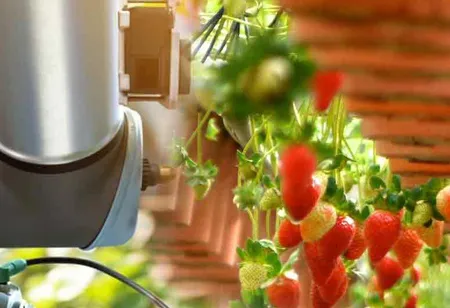Thank you for Subscribing to Agri Business Review Weekly Brief
How Recombinant DNA Technology is Revolutionising Plant Breeding
In the 1970s, some perpetual developments in the field of molecular biology equipped scientists with the ability to move DNA among unrelated organisms.

By
Agri Business Review | Monday, May 22, 2023
Stay ahead of the industry with exclusive feature stories on the top companies, expert insights and the latest news delivered straight to your inbox. Subscribe today.
The genetically-modified organism (GMO) allows the offspring of any type of traditional cross between two organisms.
FREMONT, CA: In the 1970s, some perpetual developments in the field of molecular biology equipped scientists with the ability to move DNA among unrelated organisms. In the present day, recombinant DNA technology has advanced much beyond that level, allowing scientists to take a piece of DNA, which contains one or more specific genes from almost any organism, including animals, plants, viruses, or bacteria, and it can be introduced to any specific crop species.
The application of recombinant DNA technology has been often referred to as genetic engineering. Any organism that has been altered or transformed by using modern techniques of genetic exchange, is widely known as a genetically-modified organism (GMO).
The offspring of any type of traditional cross among two organisms are also genetically modified relative to the genotype of either contributing parent. Plants have been genetically modified by the use of recombinant DNA technology to present a gene from either the same or different species, which are also known as transgenic plants and the certain gene which gets transferred is referred to as transgene. Not all of the involved GOs make use of the cross-species genetic exchange. Recombinant DNA technology can also be used in cases of transferring a gene between different variants belonging to the same species or to alter the expression of one or more of a given plant’s genes.
The application of recombinant DNA technology to allow genetic exchange in crops carries numerous advantages over traditional breeding methods. The exchange of genes is more accurate as only a single, specific gene that has been recognised as offering a useful trait is transferred to the plant that is receiving it. This results in the elimination of unwanted traits, and they need not be removed in subsequent generations, which generally takes place in traditional plant breeding.
The application of recombinant DNA technology in plant breeding also enables more rapid advancements of different varieties which contain new and desirable traits. Moreover, the specific gene that gets transferred is known, such that the genetic change that takes place to bring about the desired trait is also known, which does not occur in the case of traditional breeding methods, where the basis of the trait which is introduced is not known.
The capability to transfer genes from any plant or organism into a recipient indicates that the spectrum of genetic capabilities which are available in biological organisms possess the potential to be genetically transferred to any other organism. This only expands the spectrum of useful traits that can be used in the advancements of new crop variants. For example, if certain genes that enable certain bacteria to tolerate high levels of salt can provide the same effect as when transferred into crops, such as rice, potatoes, or wheat, the result of such improved foods on marginally saline lands may be possible.





